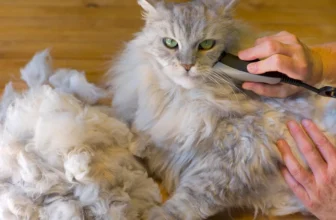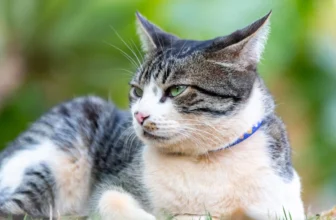As a devoted pet owner, you naturally want your American Wirehair cat to be as healthy and happy as possible. Unfortunately, one of the common health issues that many American Wirehair owners encounter is ear infections. If left untreated or improperly treated, ear infections can lead to serious complications, including hearing loss and chronic ear pain. In this article, we will explore why American Wirehair cats are prone to ear infections, how to spot the signs, and most importantly, how to prevent them through proper ear cleaning techniques and other strategies. With the knowledge and tips provided in this article, you can take proactive measures to ensure that your furry friend’s ears stay healthy and infection-free.
Why are American Wirehair Cats Prone to Ear Infections?
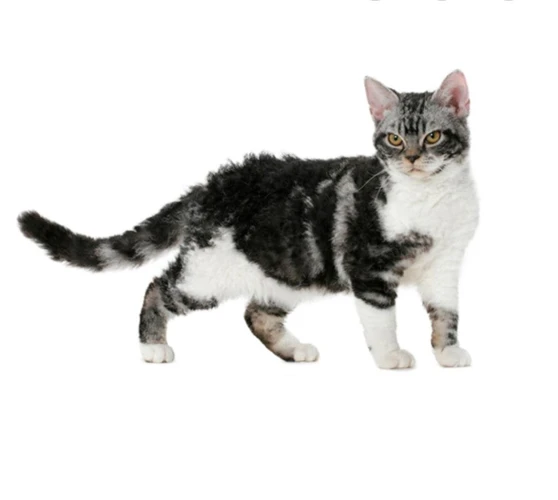
American Wirehair cats are known for their unique curly fur and playful personalities, but they also have a tendency to develop ear infections. Understanding the reasons behind this can help cat owners take preventative measures to keep their feline friends healthy. By knowing the factors that contribute to ear infections in American Wirehairs, you can take steps to reduce the risk of infection and keep your cat’s ears clean and healthy. Let’s take a closer look at the anatomy of the American Wirehair ear and the various hereditary and environmental factors that can increase the chances of ear infections. For tips on proper ear cleaning, check out our guide on cleaning American Wirehair cat ears at home.
Anatomy of the American Wirehair Ear
Understanding the anatomy of the American Wirehair’s ear is crucial in preventing ear infections. The external ear of the American Wirehair is made up of the earflap (pinna), ear canal, and eardrum. The ear canal is protected by both cartilage and bone and contains glands that produce earwax, which helps to lubricate and protect the ear from debris and harmful pathogens. The inner ear consists of the cochlea, vestibule, and semicircular canals, which are responsible for hearing and balance.
Due to their unique curly hair, American Wirehair cats are particularly susceptible to the accumulation of debris and moisture in the ear canal. This can lead to the growth of bacteria and the development of ear infections if left untreated. It’s important to regularly examine your cat’s ears for any signs of debris or inflammation and to keep them clean and dry.
Regular grooming and ear cleaning can help to prevent ear infections. See our step-by-step guide to cleaning your American Wirehair’s ears for more information on how to keep their ears clean and healthy.
However, it’s also essential to be aware of the potential hereditary and environmental factors that can contribute to ear infections in American Wirehair cats. These can include allergic reactions, immunodeficiency disorders, and exposure to parasites or toxins. By keeping these factors in mind and taking preventative measures, you can help to ensure your cat’s ears remain healthy.
In the next section, we’ll take a look at some of the common signs of ear infections in American Wirehair cats. For more information on the best ear cleaning solutions to use on your American Wirehair, see our article on the top ear cleaning products for American Wirehair cats. You can also find additional resources on wirehair ear health at wirehair-ear-help.com.
Heredity and Environmental Factors
The likelihood of American Wirehair cats developing ear infections can also be influenced by hereditary and environmental factors. Firstly, if the cat’s parents or siblings have a history of ear infections, it increases the chances of the cat developing them as well. Additionally, certain breeds, including the American Wirehair, are more prone to ear infections due to their unique ear anatomy.
Environmental factors can also play a role in increasing the risk of ear infections. For example, living in a humid or dusty environment can lead to an increased risk of ear infections. Also, cats that have a lot of hair in their ears or spend time outdoors around other animals may also be more prone to ear infections due to the increased exposure to bacteria and parasites.
To reduce the risk of ear infections, it is important to monitor your American Wirehair cat’s environment and take preventive measures such as cleaning their ears regularly and keeping their living area clean and dust-free. It is also recommended to speak with a veterinarian about any genetic predispositions your cat may have to ear infections and how to best manage them.
Here is a table outlining different hereditary and environmental factors that can increase the risk of ear infections in American Wirehair cats:
| Factors | Description |
|---|---|
| Genetics | Family history of ear infections, breed predisposition. |
| Environment | Humid or dusty living conditions, exposure to other animals, excessive ear hair. |
| Grooming Habits | Infrequent or inadequate cleaning of the ears, using improper cleaning techniques or tools. |
| Health Conditions | Allergies, autoimmune disorders, tumors, particularly in the ears, can increase the risk of infections. |
By being aware of these different factors and taking steps to reduce their impact, cat owners can help keep their American Wirehair cats healthy and free from ear infections.
Signs of Ear Infections in American Wirehair Cats

As a pet owner, it’s important to pay close attention to your American Wirehair cat’s ear health and watch out for any symptoms of ear infections. Ear infections can be painful for your furry friend and can lead to long-term health issues if left untreated. Here are some signs that your American Wirehair cat may be suffering from an ear infection:
Physical Signs
American Wirehair cats are prone to developing ear infections because of their unique ear anatomy and certain environmental factors. It is important to recognize the physical signs of ear infections so that you can take preventative measures. Some physical signs of ear infections in American Wirehair cats include:
| Physical Sign | Description |
|---|---|
| Head shaking and tilting | Constant shaking or tilting of the head may indicate that your American Wirehair cat is experiencing discomfort due to an ear infection. |
| Odor and discharge | If you notice a strong odor coming from your cat’s ears, or if you see a discharge that is brown or yellow in color, it is likely that your cat has an ear infection. |
| Sensitivity | Your American Wirehair cat may become overly sensitive to touch or may yelp or cry out when you touch or examine their ears if they have an ear infection. |
| Redness and inflammation | If your cat’s ears appear red and inflamed, it is a sign of an infection that may need medical attention. |
| Scratching and rubbing | Your cat may start excessively scratching or rubbing their ears due to the discomfort caused by an ear infection. |
It is important to note that while some of these physical signs may indicate an ear infection, they may also be symptoms of other health issues. It is crucial to consult with a veterinarian if you suspect that your American Wirehair cat is experiencing any of these physical symptoms to determine the root cause of the problem and ensure appropriate treatment.
Behavioral Signs
One of the ways to identify if your American Wirehair cat has an ear infection is to look for certain behavioral signs that they might exhibit. These signs can vary depending on the severity of the infection but are crucial to take into consideration when attempting to prevent further health problems. The following are some of the most common behavioral signs of ear infections in American Wirehair cats.
- Head shaking: If you notice that your cat is shaking their head frequently, it could be a sign that they are experiencing discomfort or pain in their ears. This can also be accompanied by scratching or rubbing of the ears.
- Tilting of the head: Another common behavioral sign of an ear infection is if your cat starts tilting their head to one side or the other. This is often a sign that they are experiencing discomfort or balance issues as a result of the infection.
- Loss of appetite: Like with any other infection, a cat that is experiencing an ear infection may experience a loss of appetite and disinterest in food due to the discomfort they are feeling.
- Changes in activity level: Cats that are experiencing pain from an ear infection may exhibit a decrease in activity level, becoming less playful and more lethargic than usual.
- Foul odor: Ear infections in cats can cause a foul odor that is noticeable even from a distance. If you notice an unpleasant smell coming from your cat’s ear, it could be a sign that they have an infection.
If you notice any of these behavioral signs in your American Wirehair cat, it’s important to take them to the vet as soon as possible to get a proper diagnosis and treatment plan. Ignoring these signs could result in the infection spreading and causing more serious health problems for your cat in the future.
Preventative Measures for Ear Infections
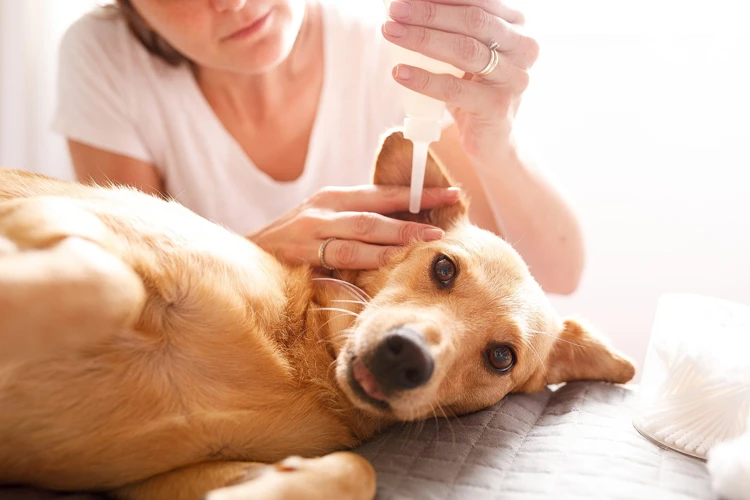
One of the most essential aspects of caring for your American Wirehair cat’s health involves taking preventative measures to avoid potential problems. When it comes to preventing ear infections, a few simple steps can make a significant difference. By being proactive, you can help ensure that your furry feline companion’s ears remain healthy and infection-free. Below are some effective preventative measures that you should consider taking. By implementing these tips, you can better safeguard your cat’s health and wellbeing.
Regular Ear Checks
It is crucial to regularly check your American Wirehair cat’s ears in order to prevent ear infections. This helps ensure that any potential issues are identified in their early stages and treated before they worsen. Below is a table outlining what to look for during a regular ear check:
| What to Check for: | Why It’s Important: |
|---|---|
| Redness: | Early signs of infection or inflammation. |
| Discharge: | Indicates an infection or mites. |
| Odor: | May suggest an infection. |
| Swelling: | Indicates inflammation from an infection or injury. |
| Crusts or scabs: | Indicates a persistent issue or allergies. |
| Tenderness: | May suggest an infection or injury. |
Regular ear checks are easy to incorporate into your American Wirehair’s grooming routine, and should be done at least once a week. If any of the above issues are identified, consult your veterinarian before attempting to treat them on your own. Remember, prevention through regular checkups is always better than treating an ear infection after the fact.
Proper Ear Cleaning Techniques
When it comes to cleaning your American Wirehair’s ears, it’s important to use proper techniques to prevent further irritation or possible damage. Here are some proper ear cleaning techniques you should follow:
- Start with a clean area: Before you start cleaning your cat’s ears, make sure the area around them is clean and dry. Wipe away any dirt or debris with a soft cloth or cotton ball.
- Use the right products: Choose a cat-specific ear cleaning solution that is gentle and formulated for cats. Avoid using harsh chemicals or human ear cleaning products as they can be too strong for your cat’s sensitive ears.
- Apply solution: Gently pour a few drops of the ear cleaning solution into your cat’s ear. Avoid over-filling the ear as it can lead to discomfort for your cat.
- Massage the ears: Gently massage the base of your cat’s ear for 15-30 seconds. You should hear a squishing sound as the ear cleaning solution works its way into the ear canal and loosens any debris.
- Clean with a cotton ball: Use a cotton ball to gently clean the inner ear flap and canal. Avoid going too deep into the ear canal as it can cause harm. Repeat this process until the cotton ball comes away clean.
- Dry the ears: Use a dry cotton ball to remove any excess cleaning solution and moisture from the ear. This is important to prevent the growth of bacteria in the ear canal.
- Reward your cat: After you’ve finished cleaning the ear, reward your cat with some treats or cuddles to help create a positive experience. It’s important to make ear cleaning a tolerable and even enjoyable experience so that your cat will be more cooperative in the future.
Remember to use caution and avoid using any tools inside your cat’s ear canal as it can lead to injury or damage. If you are not confident in your ability to clean your cat’s ears, it’s best to consult with a veterinarian or professional groomer who can show you the proper techniques.
Use of Ear Cleaning Products
Cleaning your American Wirehair cat’s ears can be a daunting task, which is why some pet owners turn to ear cleaning products. These products can be beneficial in removing debris and excess wax from your cat’s ears, but it’s important to use them correctly.
Here are some tips for using ear cleaning products on your American Wirehair cat:
- Choose a high-quality product: Look for an ear cleaning product that is specifically designed for cats and is made from natural ingredients. Avoid products that contain alcohol, hydrogen peroxide, or any harsh chemicals that can cause irritation and dryness to your cat’s ears.
- Read the instructions carefully: Ear cleaning products can come in different forms such as drops, wipes, or solutions. Make sure to follow the instructions on the product label carefully to ensure proper use.
- Apply the product correctly: Apply a small amount of the ear cleaning solution or drops onto a cotton ball or soft cloth and gently wipe the inside of your cat’s ear. Be careful not to insert the cotton ball or cloth too deeply into the ear canal, as this can cause injury to your cat’s ear.
- Observe your cat’s reaction: After applying the ear cleaning product, observe your cat’s reaction to ensure that they are not experiencing any discomfort or irritation. If your cat seems bothered, stop the process immediately and contact your veterinarian about alternative ear cleaning options.
- Use ear cleaning products sparingly: While ear cleaning products can be helpful, they should not be used too frequently. Over-cleaning can disrupt the natural balance of bacteria in your cat’s ears, leading to irritation and increased risk of infection. Aim to clean your cat’s ears once or twice a month, or as recommended by your veterinarian.
Incorporating an ear cleaning product into your cat’s ear cleaning routine can be an effective way to keep their ears healthy and prevent infections. However, it’s important to choose high-quality products and use them correctly to avoid causing discomfort or irritation to your American Wirehair cat.
Dietary Changes
To help prevent ear infections in American Wirehair cats, making certain dietary changes can be an effective measure. Since ear infections are commonly caused by yeast and bacterial overgrowth, a diet that maintains proper bacteria levels can be helpful.
Here are some dietary changes that may help:
- Probiotics: Adding probiotics to your cat’s diet can help maintain a healthy balance of bacteria in their digestive system, which can result in a lower risk of ear infections.
- Low-carbohydrate diet: A diet low in carbohydrates can help reduce yeast overgrowth in the body, potentially lowering the risk of ear infections.
- Omega-3 fatty acids: Including omega-3 fatty acids in your cat’s diet can help reduce inflammation and improve overall immune system function, which can help prevent and manage ear infections.
- Avoiding common allergens: Food allergies can sometimes lead to chronic ear infections, so it can be helpful to avoid common allergens in your cat’s diet such as grains or certain proteins.
It’s important to note that any dietary changes should be made gradually and with the guidance of a veterinarian, especially if your cat has any health issues or is on medication.
Making dietary changes can be a helpful addition to other preventative measures such as regular ear checks and proper ear cleaning techniques. By taking a holistic approach to your American Wirehair’s health, you may be able to significantly reduce their risk of developing ear infections.
Step-by-Step Guide to Proper Ear Cleaning for American Wirehair Cats
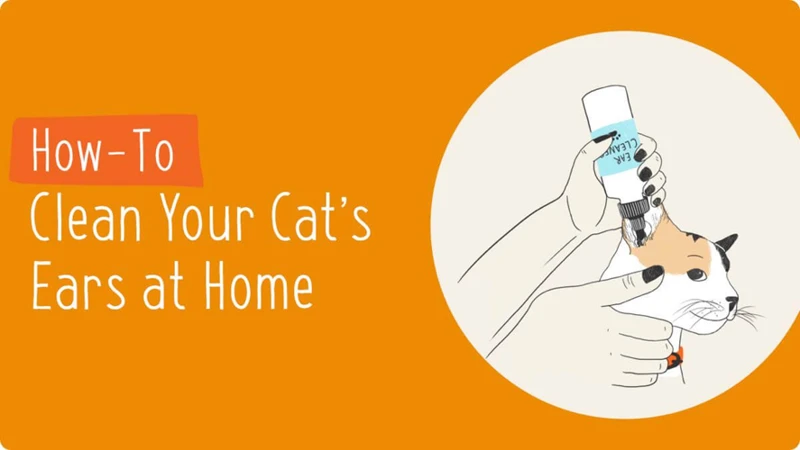
As an American Wirehair cat owner, it’s essential to maintain proper ear cleaning to prevent ear infections and ensure your cat’s overall health. Ear cleaning can often seem like a daunting task, but with the right tools and techniques, you can make it a stress-free experience for both you and your feline companion. Let’s dive into a step-by-step guide to proper ear cleaning for American Wirehair cats so that you can become an expert in taking care of your pet’s ears.
Materials Needed
Before diving into the step-by-step guide for cleaning your American Wirehair cat’s ears, make sure you have all the necessary materials. Here’s a list of what you’ll need:
- Cotton balls: Avoid using Q-tips or cotton swabs as they can push debris deeper into the ear and potentially cause injury.
- Ear cleaning solution: There are several over-the-counter ear cleaning products that you can use, but it’s important to check with your veterinarian to make sure you’re using a safe product.
- Treats: Giving your cat a treat after ear cleaning can help make the experience more positive and reduce anxiety for future cleanings.
- Towel: You may want to place a towel on a flat surface to help keep your cat still during the process and to catch any excess cleaning solution or debris.
It’s important to note that some cats may require additional materials or different techniques for ear cleaning, so always consult with your veterinarian if you are unsure. By having these materials ready, you can make the ear cleaning process smoother and more effective for your furry friend.
Steps to Clean Your Cat’s Ears
Cleaning your American Wirehair cat’s ears is an important part of their grooming routine and can prevent ear infections. Here are the steps to properly clean your cat’s ears:
| Step | Description |
|---|---|
| Step 1 | Prepare the cleaning materials. Make sure you have all the necessary materials ready: cotton balls, ear cleaner approved for cats, and treats to reward your cat after the process. |
| Step 2 | Check the ears for any abnormalities. Check your cat’s ears for any signs of redness, swelling, or discharge. If you notice anything unusual, take your cat to the vet before attempting to clean their ears. |
| Step 3 | Hold your cat securely. Hold your cat securely with one hand and use the other hand to clean their ear. |
| Step 4 | Apply the ear cleaner. Gently lift the ear flap and apply a few drops of ear cleaner into the ear canal. Make sure to follow the instructions on the ear cleaning product you are using. |
| Step 5 | Massage the base of the ear. Massage the base of the ear in a circular motion for 10-15 seconds. This will help the cleaner loosen any dirt or wax buildup inside the ear canal. |
| Step 6 | Wipe the ear clean. Gently wipe the inside of the ear with a cotton ball to remove any dirt or wax that has been loosened. Use as many cotton balls as needed, and be careful not to push debris further into the ear canal. |
| Step 7 | Repeat on the other ear. Follow the same steps to clean the other ear. |
| Step 8 | Reward your cat. Give your cat a treat and lots of praise for being a good patient. |
It is important to remember to be gentle when cleaning your cat’s ears and to never use Q-tips or cotton swabs, as they can damage the ear canal. Also, if you are unsure about any step of the process or notice any signs of discomfort from your cat, stop and consult with your veterinarian.
Common Mistakes to Avoid During Ear Cleaning
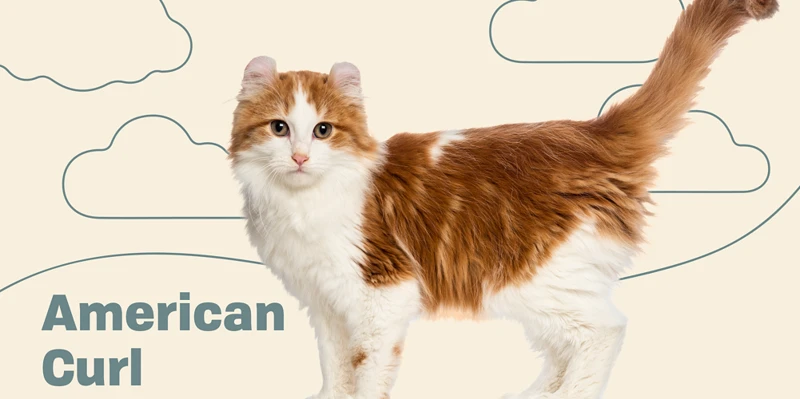
When it comes to cleaning your American Wirehair cat’s ears, it’s important to know what to avoid. Some of the most common mistakes made during ear cleaning can actually put your cat’s ear health at risk. By being aware of these mistakes and steering clear of them, you can ensure that your cat’s ears stay healthy and infection-free. Let’s take a closer look at some of these common mistakes and what you can do to avoid them.
Using Q-tips or Cotton Swabs
Using Q-tips or Cotton Swabs
Many cat owners make the mistake of using Q-tips or cotton swabs to clean their cat’s ears. However, this can be dangerous and harmful to the cat’s delicate ear canal.
Q-tips and cotton swabs can push debris and wax further into the ear canal, causing irritation and potentially leading to an ear infection. Additionally, if the swab accidentally punctures the eardrum, it can cause severe pain and damage to the cat’s hearing.
Instead of using Q-tips or cotton swabs, try using a gentle ear cleaning solution and a soft cloth or cotton ball to clean the visible part of the ear. If you notice any excessive discharge or a foul odor, take your cat to the veterinarian for a professional ear cleaning.
Here are some common mistakes to avoid when cleaning your cat’s ears:
| Mistake | Why it’s a problem | Alternative Solution |
|---|---|---|
| Using Q-tips or Cotton Swabs | Can push debris and wax further into the ear canal, causing irritation and potentially leading to an ear infection. If the swab accidentally punctures the eardrum, it can cause severe pain and damage to the cat’s hearing. | Try using a gentle ear cleaning solution and a soft cloth or cotton ball to clean the visible part of the ear. If you notice any excessive discharge or a foul odor, take your cat to the veterinarian for a professional ear cleaning. |
| Using Inappropriate Ear Cleaning Products | Harsh chemicals in ear cleaning solutions can be harmful to a cat’s delicate ears and cause irritation or an allergic reaction. | Choose a gentle ear cleaning solution specifically designed for use on cats. Look for natural ingredients and avoid products containing alcohol or hydrogen peroxide. |
| Not Cleaning the Ears Frequently Enough | Leaves debris and wax buildup in the ears, which can lead to an ear infection. | Check your cat’s ears regularly and clean them whenever you notice excessive wax or debris buildup. Depending on your cat’s breed, lifestyle, and susceptibility to ear infections, you may need to clean their ears more frequently. |
| Not Following Proper Ear Cleaning Techniques | Can cause injury or damage to the cat’s ears. | Follow a step-by-step guide for proper ear cleaning techniques, and always be gentle and patient when cleaning your cat’s ears. Ask your veterinarian for advice if you are unsure how to clean your cat’s ears. |
By avoiding these common mistakes and taking proper precautions when cleaning your cat’s ears, you can help prevent ear infections and ensure that your American Wirehair cat’s ears remain healthy and clean.
Using Inappropriate Ear Cleaning Products
Using inappropriate ear cleaning products for American Wirehair cats can actually lead to more harm than good. It is important to avoid any cleaning products containing alcohol, peroxide, or any other harsh chemicals. These substances can irritate the sensitive skin of the ear canal and even cause chemical burns. It is essential to choose ear cleaning products specifically formulated for cats, and to always check the ingredients list before use.
Here’s an overview of inappropriate ear cleaning products to avoid:
| Product Name | Potential Harmful Ingredients |
|---|---|
| Hydrogen peroxide solutions | Hydrogen peroxide |
| Vinegar solutions | Acetic acid |
| Alcohol-based solutions | Isopropyl alcohol, ethyl alcohol |
| Essential oil solutions | Tea tree oil, lavender oil, eucalyptus oil |
| Diluted bleach solutions | Sodium hypochlorite |
| Human-use ear cleaners | Benzocaine, lidocaine, chlorhexidine |
It’s important to remember that not all ear cleaning products are created equal, and using the wrong type of product can be harmful to your furry friend. Stick to products specifically designed for use in cats and pay attention to the ingredients list. If you’re unsure about whether a particular product is safe for use, consult with your veterinarian before use.
To summarize, avoid these inappropriate ear cleaning products:
- Hydrogen peroxide solutions
- Vinegar solutions
- Alcohol-based solutions
- Essential oil solutions
- Diluted bleach solutions
- Human-use ear cleaners
By using appropriate ear cleaning products and techniques, you can help keep your American Wirehair cat’s ears healthy and free from infections. Remember to always read product labels carefully and consult with your veterinarian if you’re unsure about anything.
Not Cleaning the Ears Frequently Enough
Regular cleaning of the American Wirehair cat’s ears is essential to prevent ear infections. Not cleaning the ears frequently enough is a common mistake made by many cat owners, which can lead to the development of infections. American Wirehair cats require frequent ear cleaning because they naturally produce more earwax due to the shape of their ears.
What happens when ears are not cleaned frequently enough?
When ear cleaning is not done often enough, earwax accumulates inside the ear canal, blocking it. This blockage can cause a buildup of bacteria and yeast, leading to infections. If not treated promptly, these infections can spread to other parts of the body and become more severe.
How often should you clean your cat’s ears?
It is important to clean your cat’s ears at least once a week. However, if your cat is prone to ear infections, you may need to clean their ears more frequently. Your veterinarian can advise you on the best cleaning schedule for your cat.
What are the benefits of cleaning the ears frequently?
By cleaning your cat’s ears frequently, you can remove excess earwax, bacteria, and yeast, preventing infections from occurring. Regular ear cleaning also allows you to check for any signs of redness, swelling, or discharge, which could indicate the presence of an infection or inflammation.
How to incorporate ear cleaning into your cat’s grooming routine?
- Set a regular schedule for ear cleaning, and stick to it.
- Make sure your cat is calm and relaxed before starting the ear cleaning process.
- Use a gentle ear cleaning solution recommended by your veterinarian.
- Apply the cleaning solution to a soft cotton ball or pad, and gently cleanse the inside of your cat’s ears.
- Use a fresh cotton ball or pad for each ear to avoid spreading any potential infections.
- If your cat resists the ear cleaning process, consider using treats or toys as a distraction.
- If you notice any signs of discomfort or pain, stop the ear cleaning immediately and consult your veterinarian.
Not cleaning the ears of American Wirehair cats frequently enough is a common mistake that can lead to ear infections. Regular ear cleaning helps prevent infections by removing excess earwax, bacteria, and yeast, and checking for any signs of inflammation or infection. By incorporating ear cleaning into your cat’s grooming routine, you can help keep their ears healthy and prevent future ear infections.
Not Following Proper Ear Cleaning Techniques
Proper ear cleaning techniques are crucial in preventing ear infections in American Wirehair cats. Not following the correct methods can actually cause more harm than good to your furry friend. Here are some common techniques you should avoid:
- Over-cleaning: Cleaning your cat’s ears too frequently can lead to dry and itchy ears, which in turn can lead to further infections. Ear cleaning should only be done when necessary, and not as a routine.
- Using excessive force: Cleaning your cat’s ears with forceful movements can injure their ear canals and eardrums. It’s important to be gentle and avoid any unnecessary force.
- Using the wrong tools: Using Q-tips or cotton swabs to clean your cat’s ears can push dirt and bacteria deeper into the ear canal, leading to more serious infections. Always use the tools recommended by your veterinarian.
- Using cold solutions: Putting cold solutions into your cat’s ears can be uncomfortable and might even lead to spasms in the ear canal. Always warm up the solution before using it on your cat.
- Not drying ears properly: After cleaning your cat’s ears, it’s essential to dry them properly. Leaving moisture in the ear canal can lead to further bacterial growth and infections.
By avoiding these mistakes and following the proper ear cleaning techniques, you can help keep your American Wirehair cat’s ears healthy and reduce the risk of infections. Remember, if you have any concerns about your cat’s ear health, always consult with your veterinarian for proper care and advice.
Tips for Keeping American Wirehair Cat Ears Healthy
As a responsible pet owner, it’s crucial to maintain the overall health of your American Wirehair cat, including their ears. Proper ear care not only prevents painful ear infections but also ensures good hearing. Fortunately, there are several tips you can follow to keep your feline friend’s ears healthy. Let’s dive into some of the practical tips and techniques that can help you maintain your American Wirehair’s ears in tip-top shape.
Grooming Habits
As part of a grooming routine, cat owners should pay close attention to their American Wirehair cat’s ears. Regular grooming can help prevent ear infections by removing excess debris and wax buildup from the ears. However, there are several important grooming habits to keep in mind when caring for your cat’s ears.
One grooming habit that cat owners should keep in mind is the use of proper grooming tools. You should invest in a pair of high-quality grooming scissors, which can be used to clip excess hair around the ear opening. This can help improve ventilation to the ear, which can help prevent the growth of bacteria that causes infections.
Another important grooming habit is maintaining good hygiene. You should clean your cat’s ears regularly to remove excess dirt and wax buildup. It’s important to use a gentle, non-toxic ear cleaning solution specifically designed for cats to clean their ears. You should also avoid using cotton swabs or similar objects, as they can push debris further into the ear canal and cause injury.
Keeping your cat’s bedding and grooming tools clean and free of bacteria is another important habit for preventing ear infections. Make sure to wash your cat’s bedding, toys and grooming tools regularly. This will help prevent the growth of bacteria that can cause infections.
In addition to these habits, it’s also important to monitor your cat’s behavior for any signs of ear discomfort or infection. Regular grooming and inspections can help you spot potential issues early on, allowing you to take action before the problem becomes more serious.
By incorporating these grooming habits into your cat care routine, you can help prevent ear infections in your American Wirehair cat and keep them healthy and happy.
| Grooming Habits for Preventing Ear Infections in American Wirehair Cats |
|---|
| Use of proper grooming tools, such as high-quality scissors, to clip excess hair around the ear opening |
| Maintaining good hygiene by cleaning the cat’s ears regularly with a gentle, non-toxic ear cleaning solution |
| Avoiding the use of cotton swabs or similar objects to prevent pushing debris further into the ear canal and causing injury |
| Keeping the cat’s bedding and grooming tools clean and free of bacteria by washing them regularly |
| Monitoring the cat’s behavior for potential signs of ear discomfort or infection |
Environmental Factors
Keeping your American Wirehair cat’s ears healthy goes beyond just regular ear checks and cleaning. The environment in which your cat lives can also play a big role in the prevention of ear infections. Here are some environmental factors to keep in mind:
| Furniture | The type of furniture you have in your home can affect your cat’s ears. Carpeted surfaces, drapes, and upholstery can trap dirt, dust, and pollen that can exacerbate ear infections. Consider investing in hypoallergenic furniture or regularly cleaning and vacuuming your home to reduce the allergen levels. |
|---|---|
| Air Quality | Poor air quality can also contribute to ear infections. Keep your home well-ventilated, use air purifiers, and avoid smoking indoors. Clean and replace air filters regularly and monitor humidity levels to ensure they are within the optimal range of 30-50%. |
| Garden | The outdoor environment can also affect your cat’s ears. Keep your garden tidy, remove any debris or organic matter that may attract insects, and prevent your cat from coming into contact with any potentially harmful plants. Regularly mow your lawn and use tick and flea preventatives to reduce the risk of parasitic infections. |
| Other Pets | If you have other pets in your home, monitor their health and well-being to reduce the risk of cross-infection. Keep litter boxes clean and separate food and water bowls to prevent the spread of germs. Ensure that your American Wirehair cat is up-to-date on all vaccinations and visit the vet regularly for check-ups. |
By implementing these environmental factors, you can help ensure that your American Wirehair cat’s ears remain healthy and free from infections. Remember, taking a holistic approach to your cat’s health can lead to a happy and fulfilling life for both you and your furry friend.
Dietary Changes
One often overlooked aspect of preventing ear infections in American Wirehair cats is their diet. Making dietary changes can be a simple yet effective way to keep your cat’s ears healthy.
Probiotics: One dietary change that can help prevent ear infections is incorporating probiotics into your cat’s diet. Probiotics promote gut health, which in turn can boost a cat’s immune system and prevent infections. You can find probiotics in certain brands of cat food or as supplements that can be added to their food.
Avoiding Allergenic Foods: If your American Wirehair is prone to allergies, it may be necessary to adjust their diet to avoid allergenic foods. Common allergenic ingredients in cat food include dairy, soy, wheat, and corn. Check the ingredients list on your cat’s food to make sure it doesn’t contain these allergens.
Omega-3 Fatty Acids: Omega-3 fatty acids are known to have anti-inflammatory properties which can help prevent infections. They can be found in certain types of fish, such as salmon, and can also be added to your cat’s diet as a supplement.
In addition to these dietary changes, it’s important to make sure your cat’s food is balanced and provides them with all the necessary nutrients. Below is a table of nutrients that are important for a cat’s overall health, including their ear health.
| Nutrient | Function | Sources |
|---|---|---|
| Vitamin A | Regulates immune function and promotes eye health | Liver, fish oil, egg yolks, dairy products, carrots, spinach |
| Vitamin E | Antioxidant that supports immune function and skin health | Nuts, seeds, leafy greens, fish, wheat germ oil |
| Zinc | Essential for immune function and wound healing | Beef, chicken, pork, fish, pumpkin seeds |
| Protein | Builds and repairs tissue, supports immune function | Meat, fish, eggs, dairy products |
| Essential Fatty Acids | Support skin and coat health, have anti-inflammatory properties | Fish oil, flaxseed oil, canola oil |
Making sure your cat’s diet is balanced and includes these important nutrients can go a long way in preventing ear infections and promoting overall wellness.
Conclusion
In conclusion, keeping your American Wirehair cat’s ears healthy is essential in preventing ear infections. As we have discussed, the unique anatomy of the American Wirehair ear and hereditary and environmental factors can make them more prone to infections. However, with regular ear checks and proper ear cleaning techniques, you can prevent these infections from occurring. Using appropriate ear cleaning products and making dietary changes can also contribute to your cat’s ear health.
Remember to always be gentle and patient when cleaning your cat’s ears to avoid causing discomfort or injury. Avoid common mistakes such as using Q-tips or cotton swabs and cleaning too infrequently or improperly. In addition to proper ear cleaning, grooming habits, environmental factors, and dietary changes can also play a role in maintaining your cat’s ear health.
By taking the necessary preventative measures and paying attention to your cat’s ear health, you can help ensure a happy and healthy life for your American Wirehair cat. If you notice any signs of ear infections or have concerns about your cat’s ear health, it is important to consult with your veterinarian for proper diagnosis and treatment. Overall, proper ear cleaning and preventative measures can go a long way in maintaining your cat’s ear health and well-being.
Frequently Asked Questions
1. Can American Wirehair cats get ear infections from swimming?
Yes, American Wirehair cats can get ear infections from swimming. It is important to dry their ears thoroughly after they get wet to prevent infections.
2. Is it normal for American Wirehair cats to have some debris in their ears?
It is normal for American Wirehair cats to have a small amount of debris in their ears, but excessive debris can be a sign of an ear infection.
3. How often should I clean my American Wirehair cat’s ears?
You should aim to clean your American Wirehair cat’s ears at least once a month to prevent ear infections.
4. Can I use human ear cleaning products on my American Wirehair cat?
No, you should not use human ear cleaning products on your American Wirehair cat. Use only products approved for use on cats.
5. Can ear infections in American Wirehair cats be prevented through diet alone?
No, diet alone cannot prevent ear infections in American Wirehair cats, but a healthy diet can be part of a preventative plan.
6. What should I do if my American Wirehair cat has an ear infection?
You should take your American Wirehair cat to the vet if you suspect they have an ear infection. Your vet can diagnose the infection and prescribe the appropriate treatment.
7. Can ear mites cause ear infections in American Wirehair cats?
Yes, ear mites can cause ear infections in American Wirehair cats. Be sure to get your cat regularly checked for ear mites.
8. Are there any home remedies to prevent ear infections in American Wirehair cats?
There are no proven home remedies to prevent ear infections in American Wirehair cats. Stick to regular ear checks and proper cleaning techniques.
9. Can ear infections in American Wirehair cats lead to hearing loss?
Yes, if left untreated, ear infections in American Wirehair cats can lead to permanent hearing loss.
10. Can ear infections in American Wirehair cats be contagious to other pets?
No, ear infections in American Wirehair cats are not contagious to other pets, but ear mites can spread from one pet to another.




